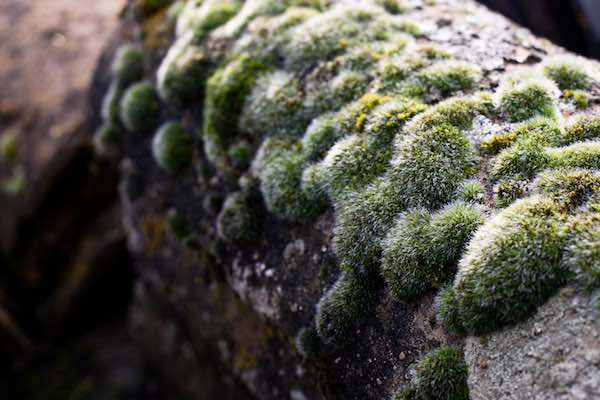
[Image above] Credit: Nik Stanbridge; Flickr CC BY-NC-ND 2.0
Although the manufacture of concrete has a heavy carbon footprint, the material is still one of the most widely used construction mediums around the globe.
Which is why concrete research is rife with myriad ways to make the material more green, in one way or another.
But, until now, those efforts have never been so literal.
Researchers from BarcelonaTech in Spain are working to perfect living concrete—a layered formulation that allows photosynthetic organisms, such as mosses, lichens, and other microorganisms, to grow within the material itself.
In addition to providing aesthetics to the concrete, the organisms recycle carbon dioxide out of the air. Affixed to buildings, the concrete also helps regulate thermal conductivity, reducing buildings’ energy demands.
That makes the new concrete the greenest we’ve seen yet—figuratively and literally.
The researchers envision that panels of the living concrete can be affixed to buildings, on top of a structural layer of concrete. Although that means these panels aren’t sufficient to build their own structure, they can be retrofitted onto existent buildings.
And, in comparison to green roofs—which are expensive to establish and maintain—the concrete panels can be easily affixed or removed as needed.
The living concrete concept consists of three layers that together are just 3–5 cm thick: an innermost waterproof layer, to prevent moisture from seeping through to the structural layer underneath; a porous center layer that stores moisture and can support life; and an outer layer that helps retain moisture by letting water in but preventing its exit.
The researchers’ tests showed that magnesium phosphate cement is the cement of choice for the panels, because it has a more basic pH than the more conventional and acidic Portland cement. With a pH of ~8, magnesium phosphate cement can better support biological growth.
According to Sandra Manso Blanco, one of the researchers working on the project, the team has already established the scientific feasibility of the concept. Manso Blanco helped complete the research as part of her doctoral thesis at BarcelonaTech and is now a postdoctoral assistant at University College London.
“Afterwards, we started a project with three different companies to gauge interest in the industrial feasibility of the multilayered panel system,” Manso Blanco writes via email.
She says that they have completed the first stage to move the development a step closer to the market, and they are gearing up to start the next stage of the project, where they will manufacture prototype panels and study their behavior.
Regarding longevity of the concrete panels, Blanco says the scientists are currently working on some pilot experiments to help understand the panels’ long-term behavior.
The researchers have published some of their work on living concrete—for more details, go here and here.
Author
April Gocha
CTT Categories
- Biomaterials & Medical
- Cement
- Construction
- Energy
- Environment
- Material Innovations
- Thermal management


